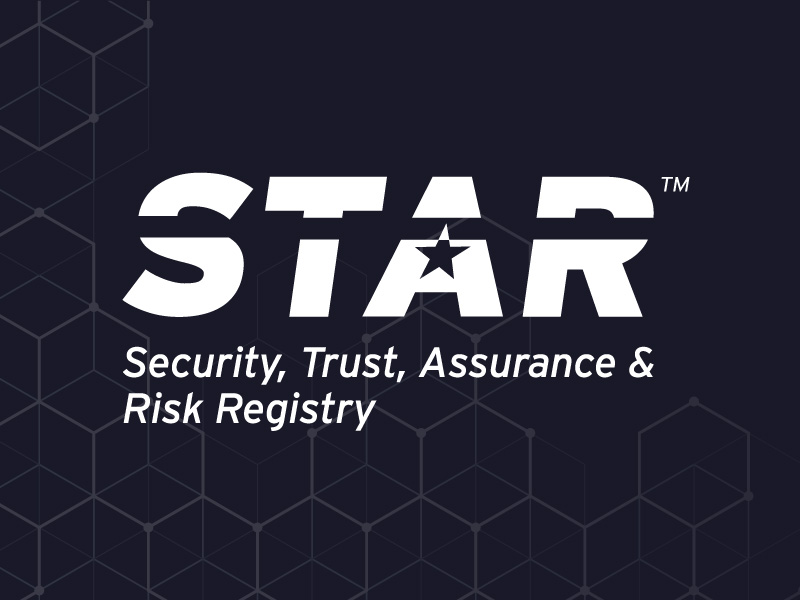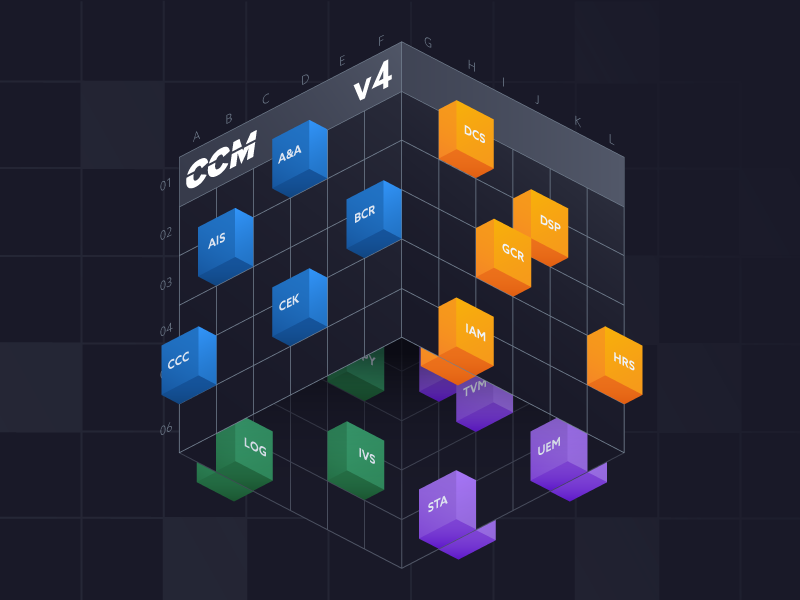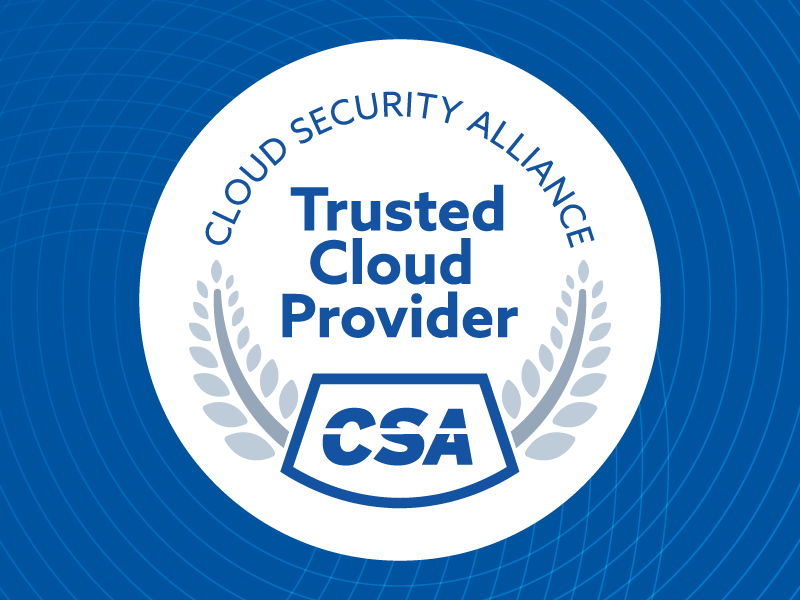VDI, DaaS, or Local Secure Enclaves? A CCM‑Aligned Playbook for BYOD in 2025
Published 11/04/2025
Securing remote and hybrid work on unmanaged devices has never been about one silver‑bullet product. It’s about choosing a control pattern that fits your risk surface, then proving that choice with auditable evidence. In 2025, that means aligning device‑agnostic access with Zero Trust principles, minimizing blast radius, and designing for graceful failure when laptops go missing, browsers are poisoned, or contractors use machines you don’t control.
This playbook offers a vendor‑neutral way to decide between three patterns – streamed desktops (VDI/DaaS), per‑app access via ZTNA and application proxies, and local secure enclaves – mapped explicitly to the Cloud Security Alliance’s Cloud Controls Matrix (CCM v4) and the Zero Trust “protect surface” (Data, Applications, Assets, Services). You’ll find threat paths to watch, the audit artifacts that satisfy reviewers, and the failure modes to expect before they surprise you.
How to Use CCM v4 to Frame BYOD Decisions
The Cloud Security Alliance’s Cloud Controls Matrix (CCM v4) organizes assurance into 17 domains and 190+ control objectives. For BYOD, it becomes a decision lens: you can evaluate each pattern against the same set of control intents instead of comparing vendor features one by one. Start by scoping your protect surface – what data, applications, assets, and services (DAAS) are actually in play for your BYOD population – and write this down as a living list that drives access boundaries.
From there, focus on the domains that move most of the risk for unmanaged devices:
- IAM (identity and access management): strong auth, session policy, step‑up rules.
- AIS/TVM (application & infrastructure security / threat & vulnerability management): hardening, patching paths, browser and runtime isolation.
- DCS/DSI (data security & lifecycle): where data can land, how it’s labeled, how long it persists.
- LOG (logging & monitoring): what you log, where you store it, and how quickly you can prove a claim.
- GRC/SEF (governance, risk, compliance / security operations): approvals, exceptions, break‑glass flows.
Treat the accompanying Consensus Assessments Initiative Questionnaire (CAIQ) as your ready‑made checklist: pre‑answer the relevant questions for each pattern so auditors aren’t starting from zero. Also, score exposure from shadow IT risks in BYOD programs and map those findings to CCM governance and exception workflows. If a control intent can’t be satisfied by design, flag it early and choose a different pattern rather than bolting on exceptions later.
Pattern 1 – Streamed Desktops (VDI/DaaS) for Unmanaged Devices
Virtual desktops route work through a centrally hosted session that never lands on the endpoint (in theory). For BYOD, they shine when you must fence data tightly or run legacy thick clients that don’t tolerate proxies. Before we size the broker and image strategy, it helps to revisit the practical differences between VDI and DaaS for remote work so we’re not papering over latency, printing, and redirection realities. The operational bet is that you can keep the desktop image, brokering tier, and gateways healthy while users hop in from browsers and thin clients.
Before diving into subsets and nuance, write down the threats you accept to get the benefits: session hijacking over the network, credential stuffing into brokers, clipboard and drive‑redirect exfiltration, and “shoulder‑surfing as a service” when a home office doubles as a family room. Then test whether your chosen controls actually close these gaps.
Common Threat Paths to Model
Attackers aim for the broker and the browser. Expect phishing for SSO tokens, replay against gateway URLs, malicious extensions that scrape screen contents, and automated password‑spray at scale. If contractors connect from shared machines, assume stale cookies and autofill artifacts hanging around in the base OS.
Audit Artifacts That Satisfy Reviewers
Auditors will ask for a hardened golden image (with patch cadence), brokering and gateway configuration, conditional access policies, copy/print/redirect rules, and security‑event pipelines that show you can reconstruct a user’s session history. Keep a short evidence pack: policy PDFs, a sanitized screenshot set, and log exports for a single week of activity.
Failure Modes to Anticipate
Latency makes productivity fall off a cliff, and the first workarounds (local copies, offline notes) are often the riskiest. Broker outages can take the whole company dark. License sprawl is common – make sure your cost model includes spikes for contractors and incident surges. Finally, false assumptions about “nothing leaves the session” break when users photograph screens or paste into unmanaged apps. Where branch connectivity is stable, thin-client devices for cloud PCs can cut local attack surface while keeping desktop streaming simple to support.
Pattern 2 – ZTNA with Per‑App Proxying
Per‑application access flips the model: instead of giving users a whole desktop, you publish only the specific apps and APIs they need, fronted by identity‑driven policy. For BYOD, this can preserve native performance and lower cost while keeping the private network dark. The control question is whether your ZTNA tier can assert device posture without invading privacy and whether the apps themselves tolerate modern reverse proxies. When publishing legacy apps, choosing SDP versus reverse proxy ZTNA determines how we handle headers, session replay risks, and what breaks under modern auth.
Begin by diagramming the flow end‑to‑end: identity provider → ZTNA policy → app proxy → app. For unmanaged endpoints, default to BYOD-friendly ZTNA deployment options that support agentless access first, then step up to agents only when policy truly requires device attestation. Put your protect surface directly on the diagram so reviewers see which data and services you’re actually guarding. Then decide what you’ll do when posture can’t be verified (e.g., read‑only access, step‑up auth, or deny) and document that as a rule, not a suggestion. For unmanaged endpoints, it’s good to also bias toward ZTNA for secure BYOD access because agentless options reduce friction while still enforcing identity‑driven policy.
Common Threat Paths to Model
Expect token replay at the proxy, discovery of internal hostnames via error pages, mixed‑content leaks in legacy web apps, and browser plugins stealing session storage. Public SaaS connected to private APIs introduces its own attack ribbon – treat those integrations like first‑class apps with their own policies.
Audit Artifacts That Satisfy Reviewers
Keep evidence for SSO and MFA enrollment, conditional access rules, per‑app segmentation, and a “least privilege map” showing who can reach what. Include WAF/WAAP rulesets for the published apps, TLS termination configs, and logs that prove you can connect an identity to a proxied request quickly.
Failure Modes to Anticipate
The biggest one is silent bypass: users routing around the proxy to reach an internal host or cached SaaS token. Legacy monoliths may break under header rewrites or can’t handle modern auth. Finally, posture checks that are too invasive will torpedo BYOD adoption – design for privacy by default and prove it. When apps tolerate modern headers, browser-as-endpoint zero trust controls can add DLP and phishing protection without touching the base OS.
Pattern 3 – Local Secure Enclaves on Unmanaged Devices
A local enclave creates a sealed workspace on the personal machine – one that can be wiped or revoked, keeps corporate identities and data fenced, and resists lateral movement into the base OS. It’s a strong fit for teams that prize native performance, offline resilience, and privacy transparency. The model assumes you can keep the enclave’s kernel‑level hooks, storage boundaries, and identity separation intact even when the host is messy.
Start with the protect surface: what data and keys will ever cross into the enclave, which apps are permitted, and how updates flow. Spell out what absolutely must not happen (e.g., tokens cached in the host browser, shared clipboard into personal apps) and build tests that try to break those rules.
Common Threat Paths to Model
Look for copy/paste and file‑mount escape hatches, host keyloggers sniffing into the enclave, and screen‑capture APIs that ignore your flags. If the enclave supports USB passthrough for peripherals, model exfiltration via removable storage and webcams.
Audit Artifacts That Satisfy Reviewers
Provide signed build manifests, policy profiles (what’s allowed/denied), identity boundary docs (separate OS user or container), and an event trail that shows provision → daily use → deprovision. Produce an attestation story: how you know the enclave is the enclave at runtime.
Failure Modes to Anticipate
User‑experience decay is real if performance lags or file‑open flows are clumsy. Host OS updates can break drivers or sandbox APIs. And privacy optics matter: if employees fear “IT can see everything,” your rollout will stall – be explicit that telemetry is workspace-scoped and anonymized. Cite external context on workplace surveillance implications for hybrid teams so employees understand where lines are drawn. For a wider market view, see this neutral look at desktop virtualization choices. It helps frame where modern workspace patterns make more sense than streamed desktops. For teams evaluating alternatives virtual desktops solutions, enclaves can deliver native speed while holding the same audit line, provided the boundary is real and regularly tested.
CAIQ, Simplified – A One‑Page Map for BYOD Controls
Reviewers shouldn’t have to translate your architecture into the CAIQ by hand. The one-pager mirrors Cloud Controls Matrix v4 checklist basics so reviewers can trace each BYOD control to an auditable question without translating our architecture by hand. Pre‑map the questions that prove your BYOD pattern is safe. Keep this to a one‑pager you can attach to risk tickets and change requests:
- Identity & Sessions (IAM): MFA enrollment, conditional access, session lifetime/idle timeout, just‑in‑time approvals for privileged actions.
- Endpoint Posture (AIS/TVM): method of device posture assertion, privacy boundaries for BYOD, frequency of re‑checks, fallback behavior when posture is unknown.
- Data Handling (DCS/DSI): storage locations, encryption at rest/in transit, clipboard/redirect policies, data retention/erasure on deprovision.
- Network Exposure (SEF/IVS): public attack surface (what is reachable), WAF/WAAP placement, DDoS controls, segmentation rules.
- Logging & Evidence (LOG): identity‑linked request logs, time‑to‑evidence SLA, tamper protection, export format for audits.
- Governance (GRC): exception process, third‑party assessments, STAR/attestation references, incident communications plan.
If a question doesn’t apply to your chosen pattern, say why in one sentence. Ambiguity is where audit time gets wasted.
Vendor Archetypes & When They Fit (Without Naming Names)
Patterns are implemented by types of vendors, not just brands. Calling out archetypes helps you shortlist without turning the discussion into marketing.
First, the desktop streamers: they provide full Windows or Linux desktops with brokering, image management, and policy for peripherals and copy/print/redirect. They excel when you have legacy thick clients or strict data residency. Next, per‑app publishers: ZTNA and reverse‑proxy platforms that front a specific web app or API with identity and policy. They fit teams who want native browser performance and a smaller attack surface. Finally, local enclave providers: they ship a controllable workspace on the user’s machine that IT can revoke, wipe, or attest.
Think through constraints: regulated workloads with strict audit trails? Lean toward streamers or enclaves that generate rich evidence. Global contractor pools with unpredictable connectivity? Per‑app access will save you from latency meltdowns. Heavy graphics or hardware needs? Local enclaves sidestep remote rendering entirely.
A BYOD Checklist for Regulated Sectors
Sectors like financial services, healthcare, and public agencies demand traceability and predictable operations under stress. It’s a good idea to fold Zero Trust compliance considerations for BYOD into the evidence plan so assessors can connect posture rules to real session logs. Use this short checklist to keep choices defensible:
- Scope & Surface: DAAS inventory signed off by data owners; list of in‑scope apps, data classes, and identities.
- Policy as Code: access and enclave/VDI policies version‑controlled; change approvals recorded; exceptions with expiry.
- Evidence Plan: predefined log exports, retention schedules, and test cases you run monthly to prove boundaries still hold.
- Business Continuity: fallback for broker/proxy outages, offline workflows for enclaves, and a playbook for mass contractor onboarding.
- Privacy by Design: telemetry limited to the workspace; employee‑visible docs that explain what’s collected and what’s not.
If any box can’t be checked without a “but,” pause. The cost of backfilling governance after rollout is always higher.
Migration‑by‑Control: Unwinding Legacy VPNs Without Breaking Work
Killing a flat VPN is less about a big‑bang cutover and more about shrinking attack paths one control at a time. The trick is sequencing: move the riskiest access first while preserving user experience.
Start by publishing a single high‑value app through your ZTNA or enclave policy and turning off its VPN dependency. Validate performance and logging with a small group, then roll outward to adjacent apps. As you go, tighten network ACLs behind the proxy, reduce DNS visibility, and remove “allow any” routes from split‑tunnel profiles. For thick clients that can’t handle modern auth, isolate them behind streamed desktops while you plan a refactor or retirement.
Quick Wins vs. Risk Kills
Quick wins include moving read‑only dashboards to per‑app access, shifting contractor access into enclaves, and disabling deprecated VPN ciphers. Risk kills are the silent ones: shared admin accounts still allowed through the VPN, lingering service‑to‑service trust that assumes a flat network, and orphaned DNS records that point to now‑public hostnames. Treat each as a change request with an attached CAIQ one‑pager so everyone sees what control intent you’re satisfying.
Conclusion
Pick a pattern and then prove it. When your architecture is anchored in the CCM’s control intents and your protect surface is explicit, the conversation moves from “which vendor” to “which verifiable controls.” BYOD on unmanaged devices becomes manageable because the boundaries are real, tested, and traceable.
If you outgrow your first choice – or new regulations raise the bar – switch by control, not by brand. Migrate the evidence plan and the core policies first, then swap the mechanism that enforces them. That way, your next audit reads like continuity, not reinvention.
Unlock Cloud Security Insights
Subscribe to our newsletter for the latest expert trends and updates
Related Articles:
Beyond Workday: Why Socially Engineered SaaS Breaches Are Spreading
Published: 12/15/2025
Micro-Segment the Metal: A Zero Trust Field Guide for Physical Hosts
Published: 12/12/2025
The CSA Triangle Chapter’s Year of Momentum: 2025 Highlights
Published: 12/11/2025
How to Build AI Prompt Guardrails: An In-Depth Guide for Securing Enterprise GenAI
Published: 12/10/2025





.png)
.jpeg)
.jpeg)
.jpeg)
.jpeg)